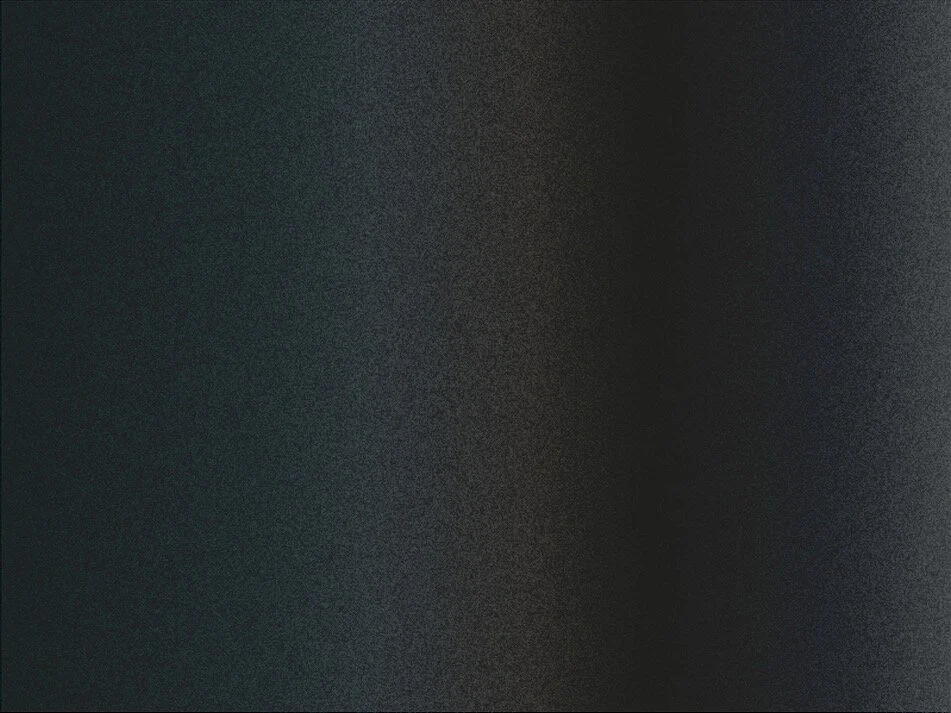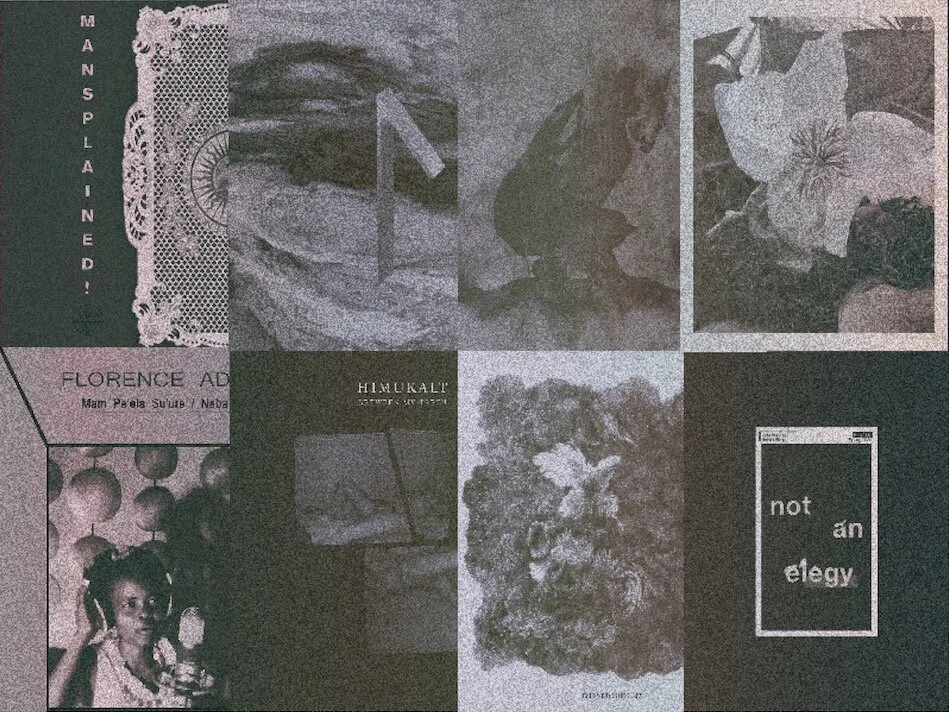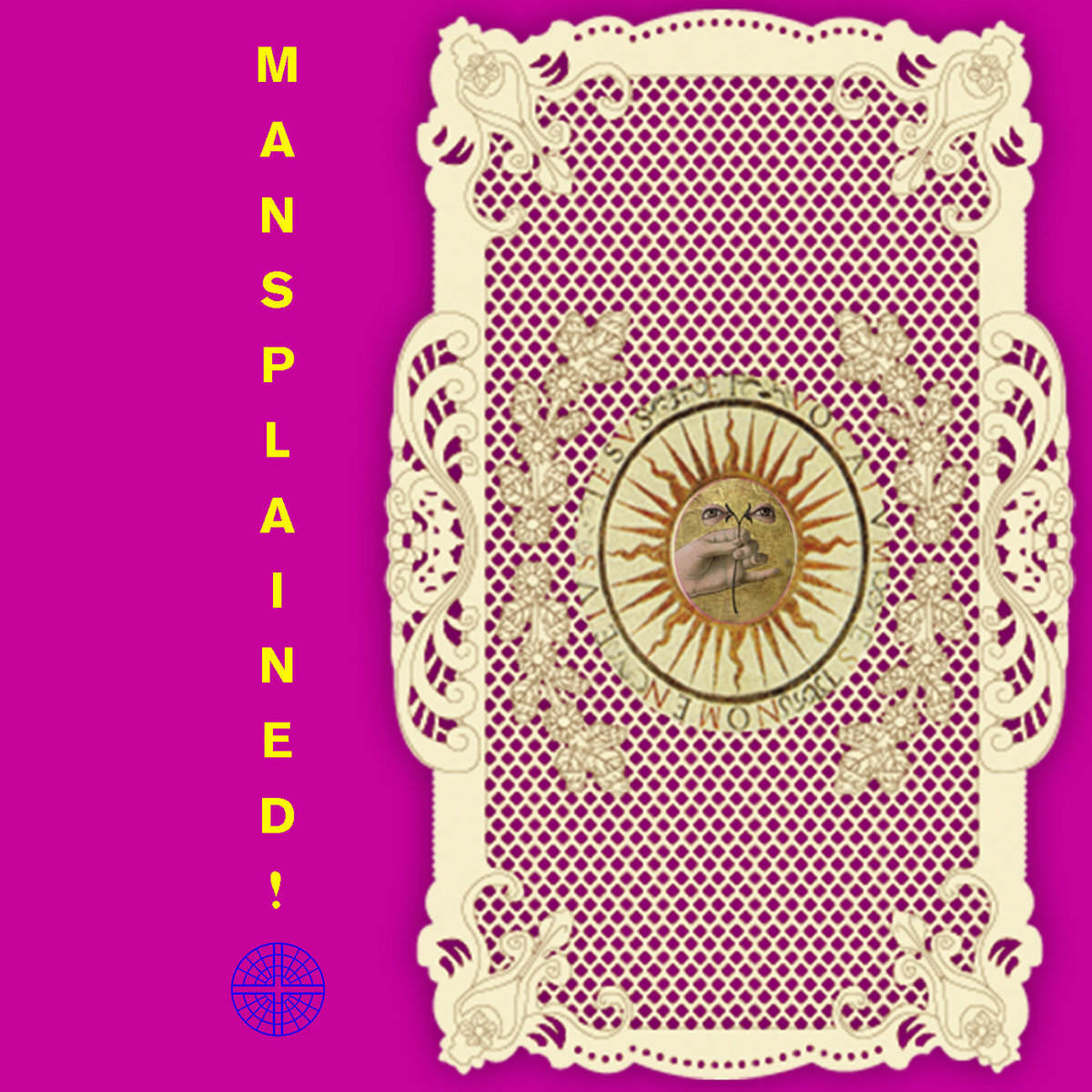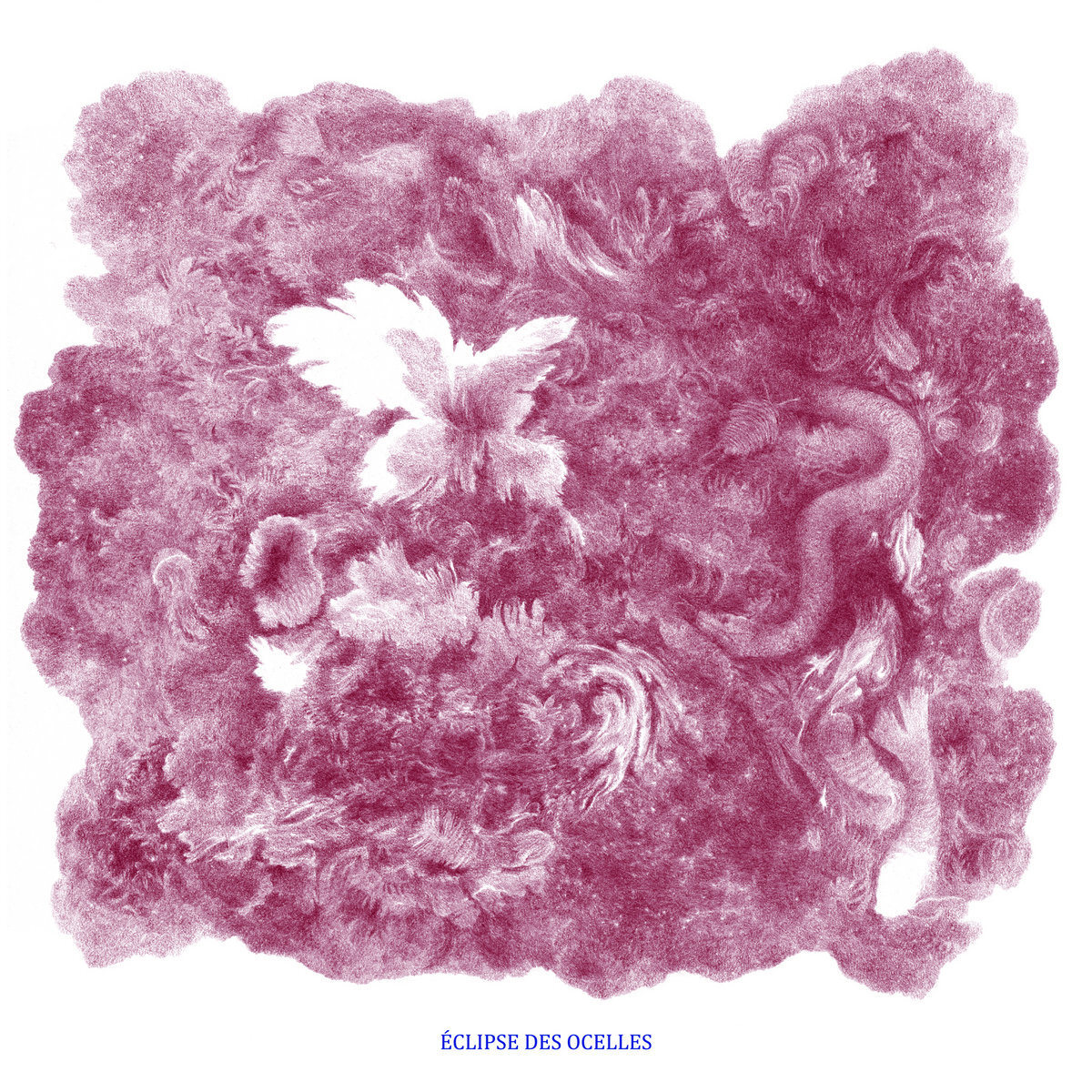WEEKLY REVIEWS
Releases that range from okay to magnificent (at least to our ears).
Transitory Tapes
Mare Nectaris - The comedy and the sourcery
Illustrator Gabriella Molina makes her debut with a fairly discreet and intimate album that seems to aim to direct our attention towards our surroundings, rather than to the pieces it contains. Each track seems to be blooming before us, and their amazement at this new world they are coming to is contagious. The energy of The Comedy… flows delicately outwards, in a style similar to the amorphous psychedelic folk of Jüppala Kääpiö, with the distinction that everything is performed by Gabriella.
There is no structure. At times we can hear guitar arpeggios, voices, and then everything becomes nebulous, giving way to sounds of gentle and mysterious timbre. It can't really be said that there are memorable moments, but this is not for lack of quality; I would even go so far as to say that it is intentional. The pieces are completely improvised and, in the words of Gabriella herself, they were played for those friends who fell asleep in her bed. And it is because of that, that The comedy… ends up having a blurry filter, making it feel like the moment between sleep and wakefulness, like that point where, seconds later, we find ourselves at the center of a story that seems to have already been going on for hours.
This is an album where the sum of the parts creates a pretty friendly whole, and where trying to pick each song apart might not be as fruitful. The sound design and textures alone might not give us something that has not been experienced before, but together they really manage to create a very specific state of mind, and the best thing is that Gabriella keeps it stable at all times. In a rather endearing way, the artist manages to capture the essence of dreams through her disconnected and intriguing pieces.
Philophon
Florence Adooni - Mam Pe'ela Su'ure/Naba Afreda
With this very brief installment, the Ghanaian artist reverses a couple of songs of praise, classics of the Frafra culture, giving them vast instrumentation and a lot of groove. Despite sounding modern, that seventies funk touch provided by the musicians of the High Life collective, makes the pieces retain their essence of joy and celebration.
The guitars move with that unmistakable cadence so inherent to the African continent and in the homonymous track, Akule Pepe's phrases are sublime. The instrument fusion is solid and precise, making the slight off-beats feel natural and in sync with Florence's voice, who opts for a rather peculiar cadence and delivery, almost out of rhythm, but accentuating at the right moments so that everything sits in balance.
In both tracks, each participant gives the best of themselves, incurring in interesting lines that, when isolated, give us material that is worth analyzing, but that together, they manage to create something that goes far beyond its technical value.
SUNNESTHER - En El Lugar Más Triste De Mi Corazón
While the Hidalgo-hailing producer and artist prepares her long-awaited album (which has already gone through different versions and passed along different labels), Sunnesther appeases our expectations with an EP in which existing reggaeton songs are lacerated and wrapped in the bizarre essence that is already an inherent hallmark of this artist.
Reggaeton’s distinctive rhythm is there, unmistakable and insistent as ever, but the tracks give the impression of being wounded, as their cadence is erratic. The vocals and instrumentation, with the lowered and dissonant pitch, are a dark reflection of the typical festive and energetic image usually associated with the genre. Everything is clouded by Sunnesther’s sinister influx, while she remains completely removed from the equation, simply letting her creations walk by themselves, drugged and under the stupor of dark-tinted vaporwave.
The untitled track takes us back to the ambient and sampling exercises of Sunnesther's past works, and what the end of this EP holds is an example of her darker side: a drone piece propelled by a succession of sampled television commercials and the audio of one of the most viral videos of the infamous El Blog del Narco.
It is a cliché to say that an artist gives life to a song that he/she decides to intervene as a tribute or cover, but sometimes it has some truth; however, in Sunnesther’s case, it seems that the opposite happens: she seems to take away their vital essence, leaving us with empty and altered vessels, that turn out to be more interesting than what they were in life.
Commando Vanessa
V/A - Mansplained!
To celebrate its first anniversary, the Commando Vanessa label released this compilation, exhibiting selected works from a large part of their roster. The practices that we can find range from industrial, sound collages, noise, ambient, electronic -both in its abstract branches and in the most danceable-, and other positions that, although different from each other, share an air of struggle and disruption.
The industrial side is provided by Black Propaganda -with their intriguing track "The shadow valley"- and The Marquise with the album’s closing track. The former has wider a sound, moving closer to dubstep or menacing synthwave; on the contrary, The Marquise gives us raw and pure aggression. In the second track, Marie Guilleray delivers speeches that change the speed and pitch, sometimes agglomerated with sounds and accelerated sighs, until these sentences are cut and mixed with each other.
Innocent Heretic, featuring RUIN, contribute with the longest and most nuanced track of the entire compilation. Within its eight minutes, we go from vocal textures, to an electrifying beat, to deep techno dynamics, which extend into the next track, "Hysope" by Deeat Palace, with its off-kilter rhythm.
Mansplained! it is a compendium with abrupt changes, but with a fairly solid common thread. Despite the stylistic differences, we can deduce, without having to look at the tracklist, that although this is not coming from the same artist, it is a collective effort with a common goal. There is no track that feels out of place or like pure filler; this is a pretty effective sampler that serves as an introduction to the label’s very idiosyncratic world.
Leila Bordreuil - Not an Elegy
Combining the sound properties of open spaces and extended techniques for cello, Leila Bordreuil presents two contrasting improvised pieces in which saturation, silence, and elements of the environment become part of the compositions.
Not an Elegy opens with a strident cello whose reverberation is magnified thanks to the structure of the subway aisles, in which Leila and her instrument are fused in a. The scraping of the bow with the strings resonates with a harsh timbre, while, already deep in the piece, in the background, we can appreciate screams and the walking of a train. Bordreuil is locked in a loop of frenzy and calm within a space that is not alien to the hustle and bustle, but which, due to the pandemic, was almost empty.
On the contrary, “Past Continuous” is a spectral subharmonic from which no less mysterious tonalities emerge. This piece is made of timid, but ominous frequencies, in a less crowded and intimate space for the artist, and if there is something to highlight, it is the manifestation of nuances and natural distortion that occurs thanks to the box of a piano that was used. as a kind of organic amplifier.
Not an Elegy reflects two constants of modern life: the hustle and bustle that can be experienced in the open spaces, and that sense of isolation that haunts us when we are confined to our rooms. Both concepts have been explored by countless artists, but Bordreuil manages to emphasize the essential, without the need to use so many resources.
morc tapes
Roxane Métayer - Éclipse des ocelles
The multidisciplinary artist, Roxane Métayer, plays the violin with an air of spontaneity and a fairly extensive tonal palette. In this, her solo debut, Métayer adds more instruments to her arsenal and fluctuates between the improvised and premeditated, as well as harmony and dissonance, to give us an album that is deep and rich in organic textures.
Métayer's work can be classified as folk, but with flashes of modernity; everything we hear is completely organic, but technology is used in a subtle way, not to compensate for any deficiencies, but to expand the sound properties of the violin, the accompanying instruments and of her own voice, which can be heard reciting poetry in her native language or whistling lines that harmonize with the melodies being played.
Throughout the album, we will find different techniques to treat the strings, ranging from drones, pizzicatos, to nervous strokes with a raspy -almost atonal- timbre; however, this is not a virtuosity display on Roxane's part. The violinist creates her pieces thinking of them as a whole, with an expressionist approach. That is much more effective than performing indulgent fretboard acrobatics just to reaffirm her technical abilities.
Each piece of Éclipse benefits from this detachment from formality and is allowed to move freely with fluid transitions, and embellishments that complement and accentuate instead of only existing to steal the spotlight; Métayer's pieces invite us to find the details and nuances that arise from the fusion of all the elements at play.
OTONO
KOI - Laguz
The Mexican producer reissues her debut album through the capital's OTONO label, who opted to add extra material, expanding an already extensive work. Laguz is slow-paced, but every step is essential; the pieces unfold with hypnotic flair but there’s also a certain unease to them.
KOI’s work fits right into the crevices of deep-techno, although she makes an effort not to stay locked within these limitations. There are completely ghostly passages, with a very subtle pulse -or none at all-, and there are moments of acid, psychedelic saturation. The sound textures are deep and invite us to lose ourselves within their entrails; however, there’s a harshness that keeps us at bay thanks to the use of very high and piercing timbres.
Despite having extra tracks, they fit quite well into the narrative and aesthetics of the originals, keeping Laguz's flow unaffected. As in any journey, there are landscapes that turn out to be more memorable, and although Laguz is constant, it is the tracks with the most pulse that manage to penetrate the psyche the most. Tracks like “SOWILO” and “LIBELULA JAM” (one of the bonus tracks), demonstrate KOI's ability to build sound monuments that seem to collapse as they rise, paving the way to new structures. Laguz is a tribute to constant evolution and growth.
Himukalt - Between My Teeth
Suffocating and abrasive is how this new installment by Ester Kärkkäinen could be summed up. The Nevada-based artist continues to expand her power electronics sound with extremely dark tonalities and dense consistency. Although we are facing a work properly of the genre with its elements almost intact (recited and distorted vocals, sudden bursts of static and sharp rhythms) the darkness emanated by its pieces has its own stamp; In essence, it's not much different than Genocide Organ, Deathpile, or Brighter Death Now, to name a few, but it's not a blatant clone either.
Apart from the brutal sound manipulation, full of textures that are as comforting as lying on a bed made of barbed wire, Himukalt distorts her voice under different filters, giving her pieces volume and depth, something that is not always achieved -or looked for- within the dubious world of power electronics. At times, we can hear a female voice; at others, the timbre is lower; and, on more than one occasion, we can hear trembling and distorted words beyond all recognition.
Esther takes different forms throughout the album, but they are all monstrous and unnerving. “I no longer belong” and “in every stage of this oppression” appear as the most sinister moments, while the industrial techno of “Mine” might be the most accessible just because of its 4/4 rhythm, but everything surrounding it is still murky and inhuman.
Without necessarily being harsher than her influences, Kärkkäinen's work is extremely overwhelming in its own way. Himukalt creates a completely hermetic atmosphere, in which we can feel the ominous and gradual transformation of oxygen into carbon dioxide; the minutes are numbered, but Between My Teeth retains its magnetism.













